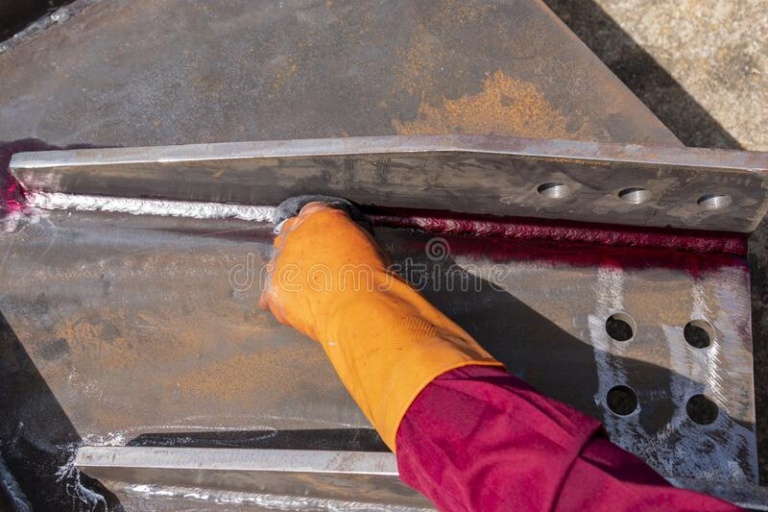A technique called liquid penetration inspection is used to find surface-breaking faults by observing the bleedout of a coloured or fluorescent dye from the flaw. The method is based on a liquid’s capacity to be sucked into a fault in a “clean” surface via capillary action. Extra surface penetrant is removed, then a developer is added after a time period known as the “dwell.” Acting as a “blotter,” this To make the imperfection visible, it extracts the penetrant from it. Fluorescent penetrants must be utilised in dimly lit areas with an ultraviolet “black light,” whereas coloured (contrast) penetrants require strong white light. A pre-cleaned component’s surface is treated with a penetrant solution. Capillary motion causes the liquid to be drawn into surface-breaking flaws. The surface is meticulously cleansed of extra penetrant substance. The imprisoned penetrant is drawn back to the surface with the help of a developer, where it spreads out and creates an indication. Compared to the actual defect, the indication is considerably simpler to perceive.
The course is designed for all NDT personnel, mechanical engineering, and Qc engineering For Welding Inspection.


SREE BALAJI TECHNICAL INSPECTION SERVICES(SBTIS) – NDT Training and Welding Inspection Institute in Trichy.
@2022 All Rights Reserved By SBTIS. Designed by Samsaj Info Tech